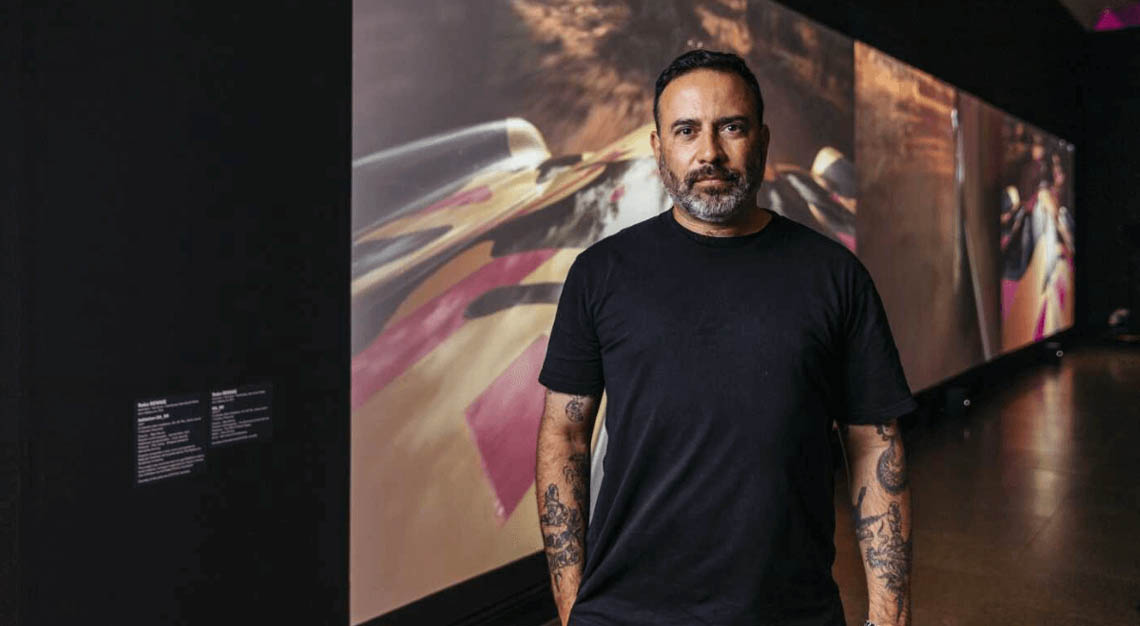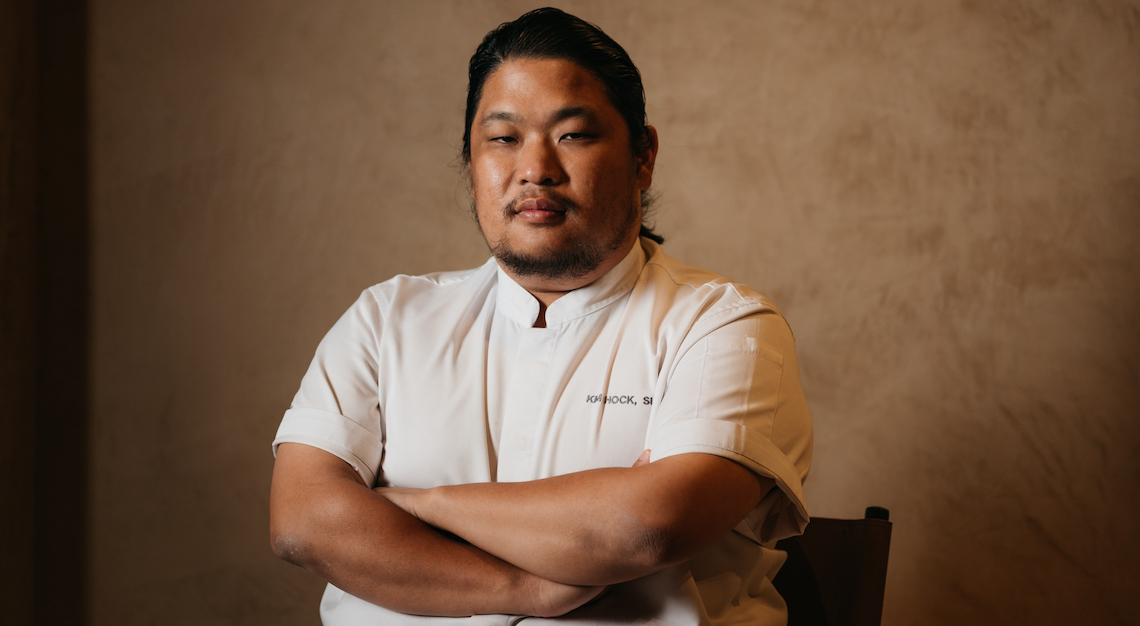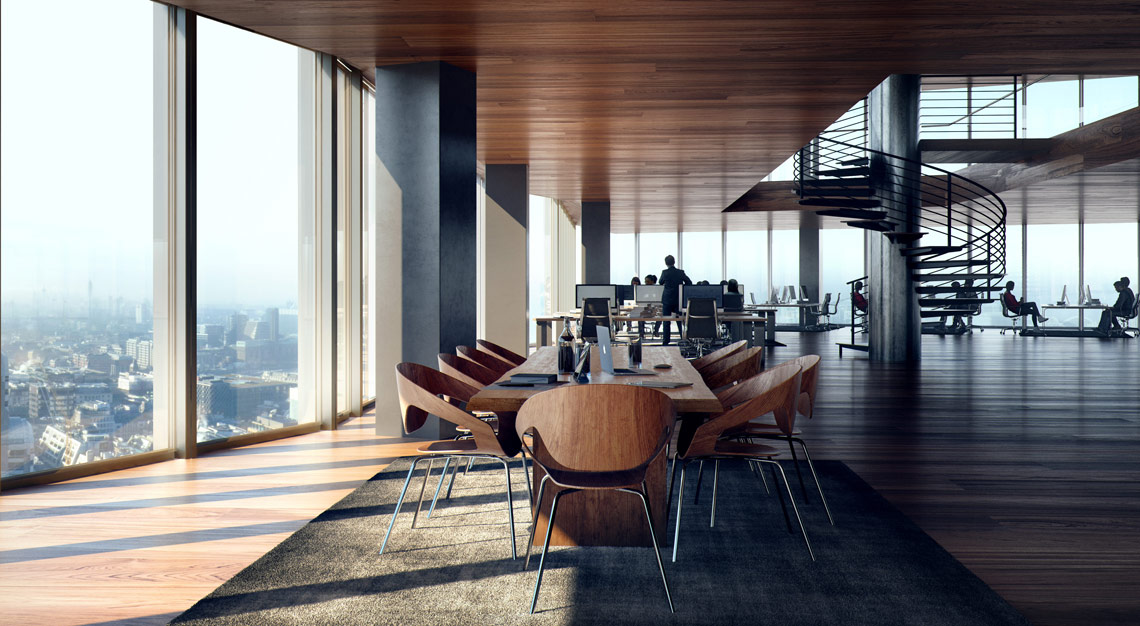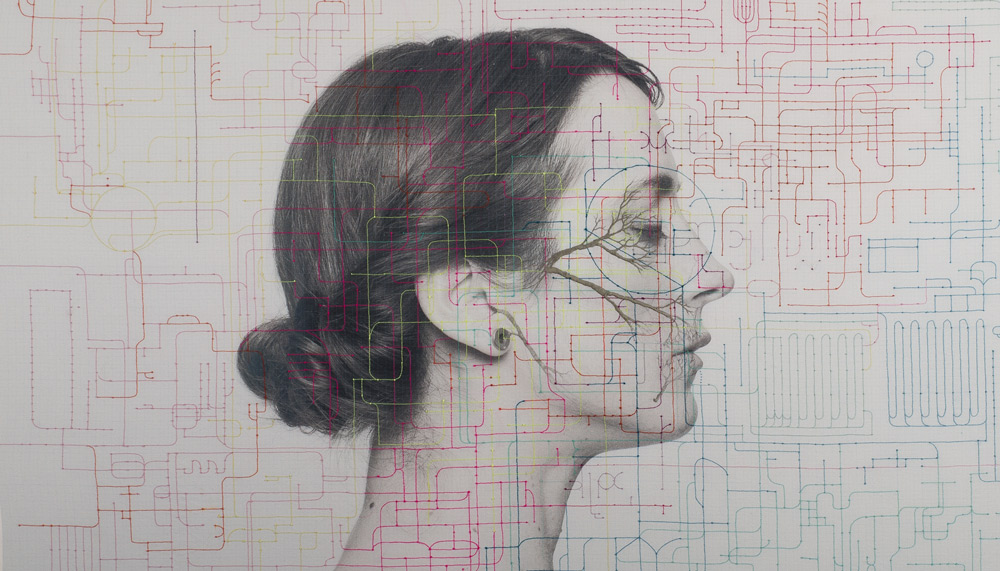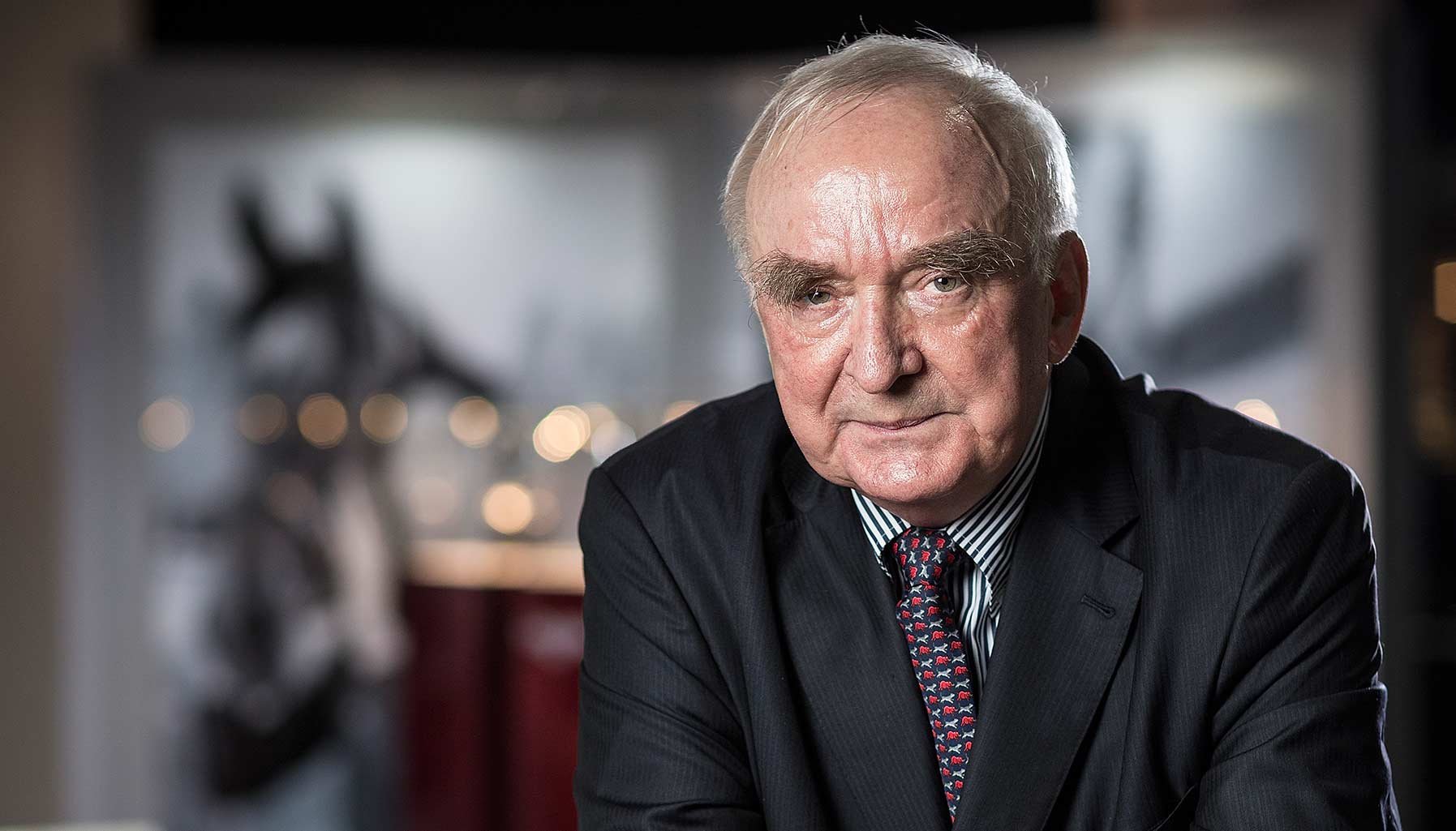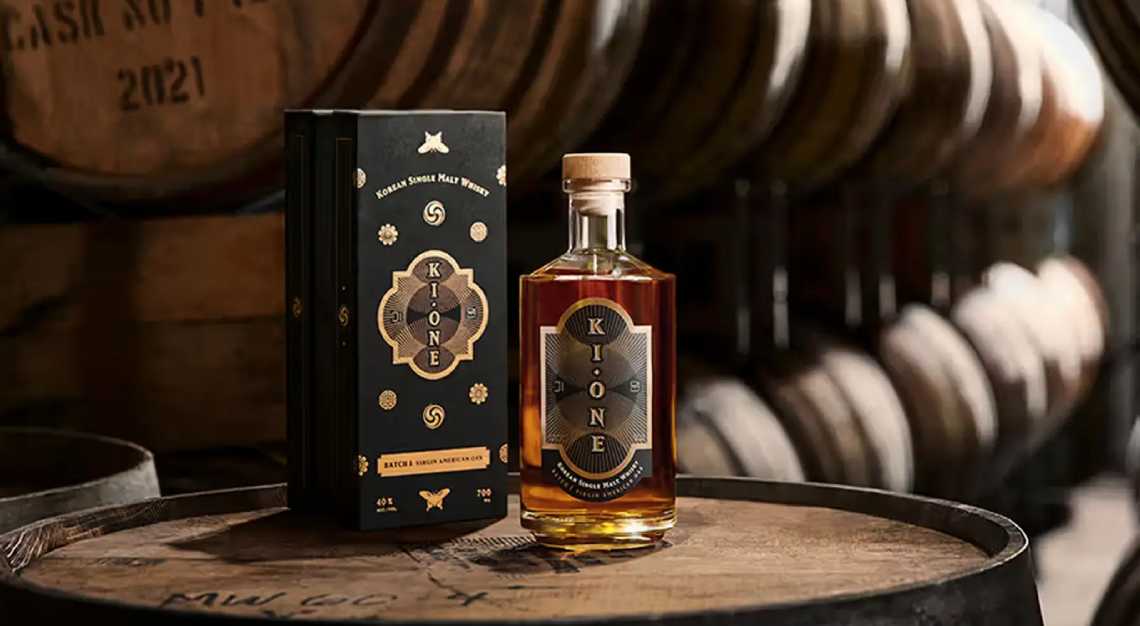The Answers With… Reko Rennie, an Aboriginal artist who discusses the power of perspective, expression of identity and why he thrashed a Rolls-Royce Corniche on Country
While the contemporary art world may not be lacking in rebellion, intellect and chutzpah, few artists can lay claim to the centre of a Venn diagram merging all. Reko Rennie is such a man. Except that this Kamilaroi/Gamilaraay/Gamilaroi artist also manages to throw cool, beauty and an unforgettable, haunting precision into the frame as well.
Rennie’s geometric patterns, abstract camouflage, words of remembrance, fierce warriors and neon designs inherited from his grandmother have found acclaim and achieved rightful cut through—beamed across the Sydney Opera House’s sails, laid on a basketball court in Melbourne, hung in the sky in Sydney, flanking the starting line (and Daniel Ricciardo’s helmet) at the Melbourne Grand Prix and found in almost every state gallery collection in the country.
With a diverse output that explores his identity as an Aboriginal man, dismantles and questions the status quo and shines a bright light on Australia’s dark history for future betterment, Rennie is carving his neon-hued mark on culture with a razor-sharp edge.
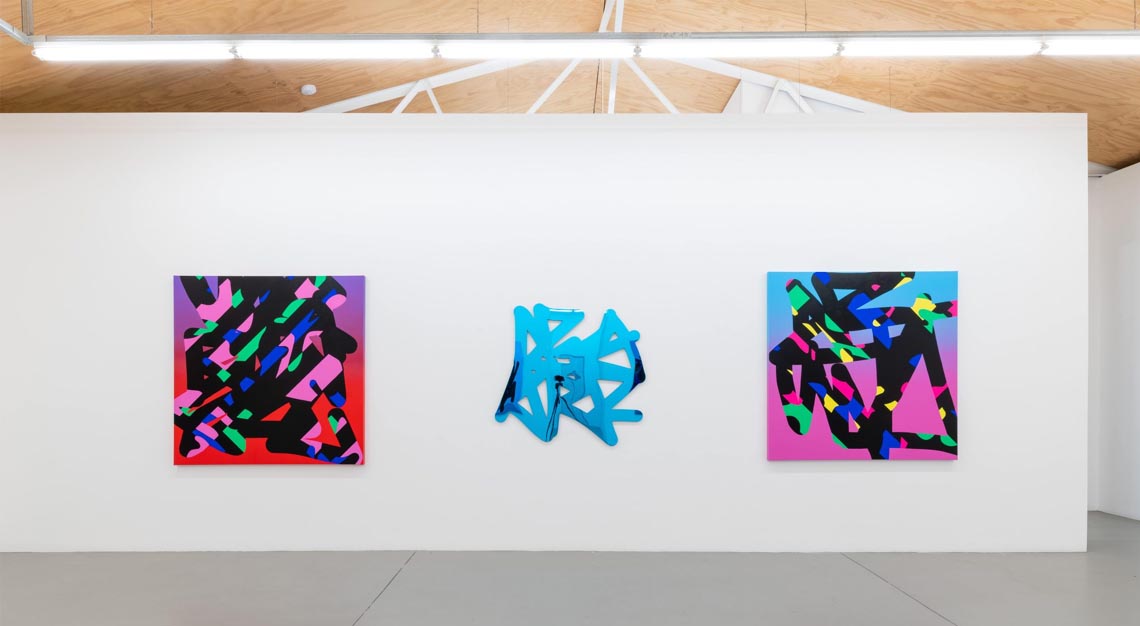
You grew up in the inner-west Melbourne suburb of Footscray in the ’70s and ’80s, at a time when a lot of activism was taking place—unionism, Aboriginal land rights, feminism and significant political change. How did this steer you towards being an artist?
I got into art by doing graffiti. That was my thing; I got great joy out of writing my name in places illegally. Footscray was a very working-class, multicultural community, and a bunch of us didn’t have much. You saw how others were treated by law and police, and I always had a bit of a strained relationship with their attitudes towards me, as a young Aboriginal kid. All those things make you question the system.
What also resonated with me was the political art movement of the time that was responding to everything going on and it was crudely being illustrated with a can of paint and a brush. I started seeing a lot of that around Melbourne and thought, ‘How cool is it that people are writing shit on the walls, writing comments and statements? I want to do that.’ It gave me all these early skills in navigating how to express myself. Those were fundamentally important aspects of childhood and rebelling against the system; skills and experiences that I could then combine with my identity and my family’s narrative and use as fire to create a political and visual artistic language.
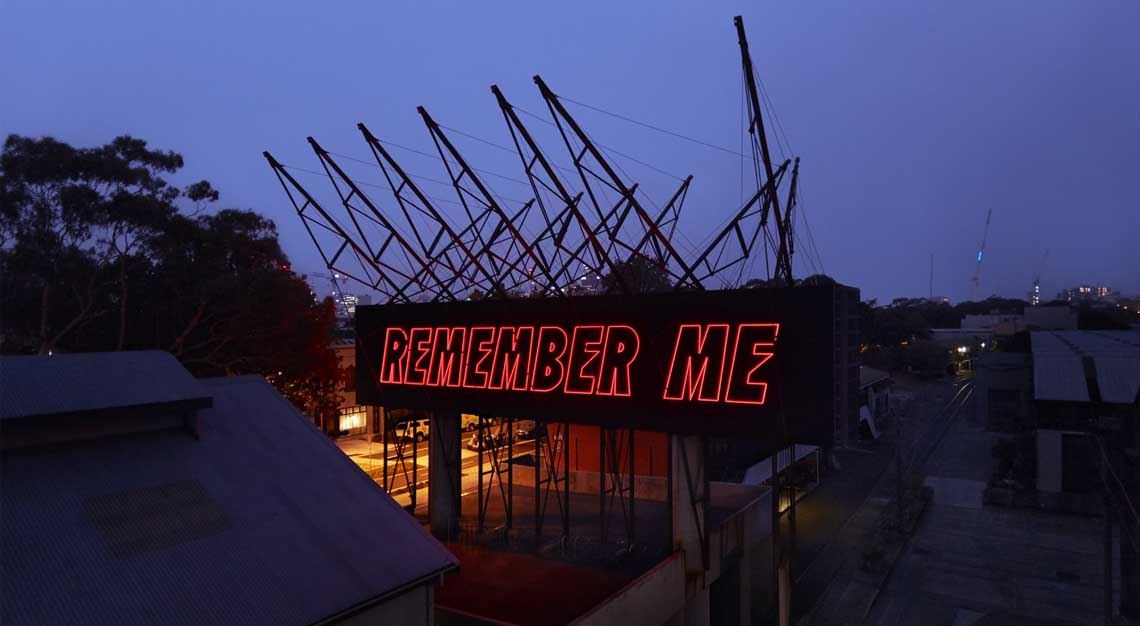
It makes sense considering much of your work today relates to memory, identity and remembrance of who came before, not unlike how graffiti can say, ‘I was here, and you can’t take that away from me’.
That’s right—remember me. Remember the history of this country. We’re a multicultural, multifaceted, unique community of various language groups and artistic practices representing the oldest continuing living culture in the world. Our identity has been dumbed down so much by Western European ideologies, but all that’s changing. Our generation is now seeing all these beautifully vocal and empowered communities speak out because there’s so much to unpack here in this country. That’s why it’s important to acknowledge the past and present, move into the future, and be empowered to do so.
Is it hard to walk the line of communicating the ancient importance of Aboriginal culture and history with that of what it means to be an Aboriginal man in today’s society?
It can be problematic. But you realise you’re contributing to something much bigger, a message that can raise awareness, inform through art, or share a particular message, and there’s beauty in that. I was once a journalist and I thought I’d be able to empower and change how Aboriginal people were portrayed in mass media; obviously so naive and powerless in that mainstream media world. But through art I’ve had this amazing voice where I could share work, opinions, and expressions of form and identity around the world. It’s a really beautiful thing, and it evolves. That’s what drives me.
You’ve risen and risen in the art world. What’s that experience been like?
It’s funny, weirdly, because in this country, it’s tough to break into art. There are so many gatekeepers and so much bullshit nepotism —and it really is a jingoistic kind of nepotism. So that frustrated me. I had a few people say, ‘You can do this, you can’t do that’; ‘You’ve got to do this and not that … when someone tells me I can’t do something or is negative about my work, it fuels me more to prove them wrong.
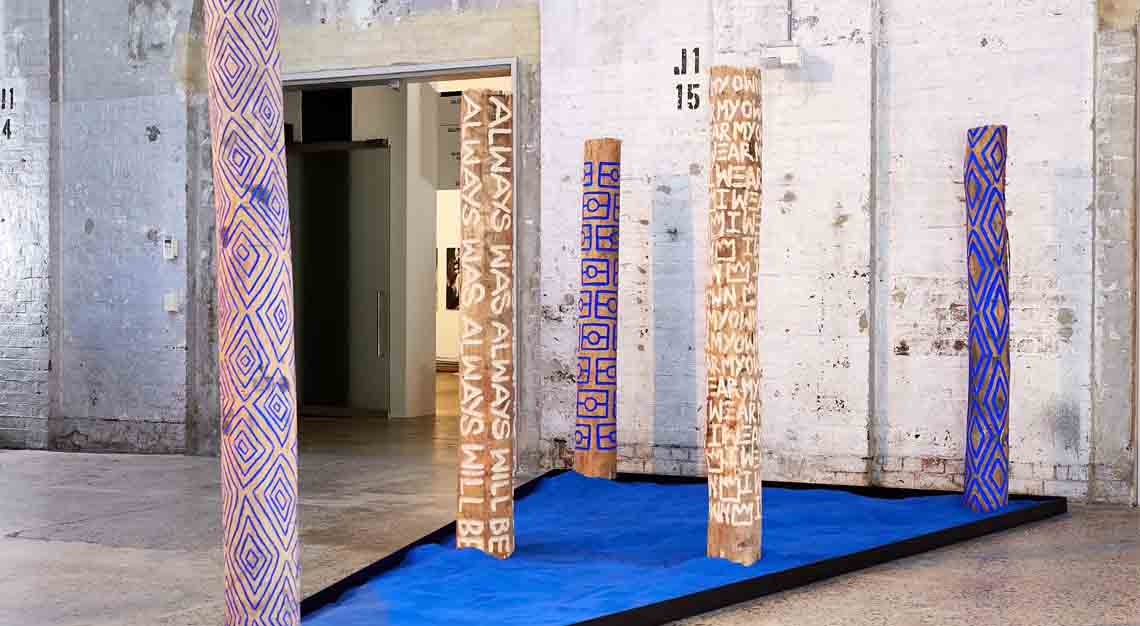
Was there a ‘breakthrough moment’?
I went to Paris and did a residency [at Cite Internationale daes Artes in 2009], and for some reason, that legitimised my career as an artist here —it was that thing of, ‘oh, he’s gone to Paris. I had won a couple of awards, held shows, but then, ABC did a story on me over there, and it blew up. In those early days, I couldn’t afford art magazines —I used to go to the NGV, have a coffee, take a little notebook, and go through the magazines and write down all the up-and-coming curators.
Using my journalistic research skills, I would send out 40 to 50 emails a week, and every now and then, I’d get a hit, and get invited to do a project overseas. And I’d pay for it all myself, take out a credit card and invest in myself, and that’s what paid off for me: doing things overseas. What then happened back here, galleries and institutions started to take notice of me. It was pretty interesting.
You’ve got a future residency at the American Academy Rome. How would you describe the international attitude to contemporary Aboriginal art right now?
People are really interested and the work is always well-received. I think when you’re talking about loss of identity, land, culture and language; or persecution of identity and cross-generational trauma, it’s a very relatable story. Because at some point in history, people have had that experience as well. So it’s an unfortunately common narrative around the world, and that’s where we can share a bond and a connection.
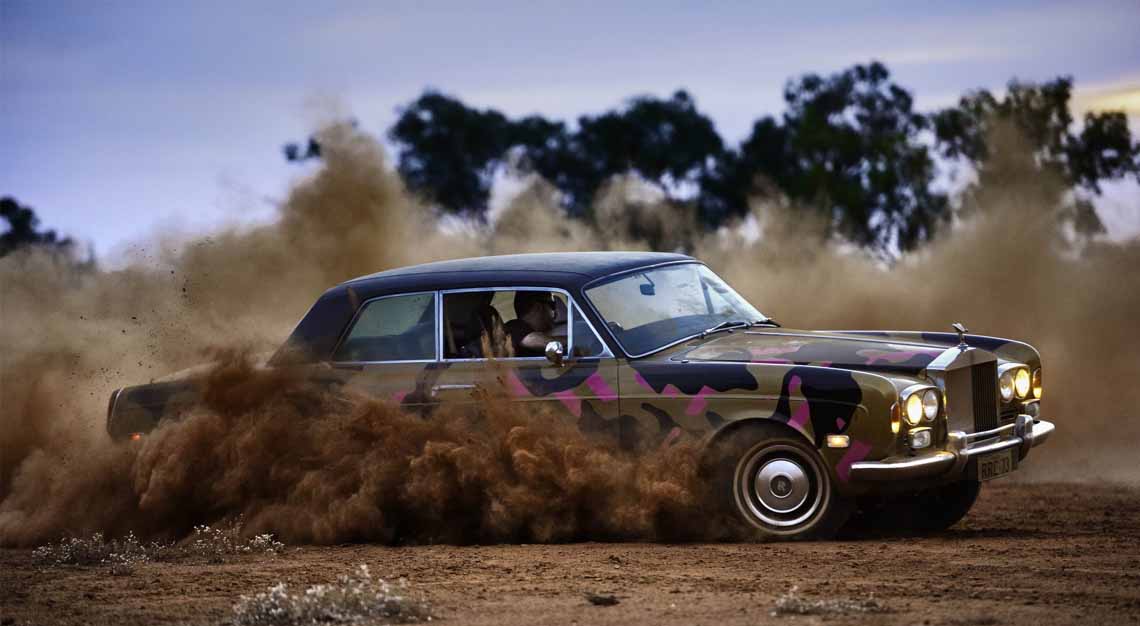
The shared global sadness of displacement and memory is increasingly relevant. How do you explore themes like this in your process and work?
Thinking about loss and memory and creating work from that is really multilayered. My video work with the Rolls-Royce [OA_RR, 2017] talks about my grandmother’s experience of being eight years old and taken from her family, made to be a slave, working for rations on a pastoral station where there was systematic abuse by pastoralists. People don’t talk about that. That’s why I made that Rolls work. I was reclaiming that symbol of colonial power, wealth and royalty. Those who drove those cars would have Aboriginal people removed from their families as slaves, and then they’d drive to church on Sunday and be absolved of their sins.
And this was systemic in Australia, not just in one geographic location. So going back to an ex-pastoral station, taking a cool, ’73 Rolls-Royce Corniche on Country painted in a geometric camouflage, with line work and symbolism that comes from my family area [Kamilaroi] and which I designed to talk to the fact our people had to conceal who they were, it was a declaration of identity. I was saying, ‘I’m proud of who I am and where I come from and all of those who came before me. It’s my right to show and declare that. I don’t want to blend in.’ So we shot it, did some burnouts, and took all the notions of my misspent youth driving cars in the west and put those skills to work, which I did.
That’s not the only work to feature you in a hotted-up car. 2021’s follow-up Initiation_OA sees you cruising around your old stomping ground in a Holden Monaro, another strong white Australia symbol, albeit with an Aboriginal name. Where’d this love of cars come from?
I’m really attracted to the design aspects of a car and I love classics. At the moment, I only have a three-litre, Australian-delivered Porsche ’77 Targa and a Cayenne GTS, which is my studio car, but I’ve had Alfas, Valiants, Hondas, and lots of different cars, as well as bikes over the years.
I’m actually looking for another thing to paint, maybe a Porsche? But heavy car culture was something I grew up with. There was this whole thing about hotting up cars—old Monaros, Commodore VH SLEs, Alfa Romeos, V8 Interceptors—and a lot of pride and community existed around customising cars. But they were also a symbol of success and aspiration, and there was a weird symbology related to the car too.
Growing up in the west was pretty wild and heavy in trauma from seeing a lot of things, and it was a certain type of person who drove a Monaro. There is a lot of toxic masculinity associated with those cars as well. I wanted to reclaim all that with a pink, sparkly car and go through these urban landscapes, where I was taught a lot of lessons; that was my form of initiation. And yes, I wanted to reclaim the name, too. That’s why I picked it.
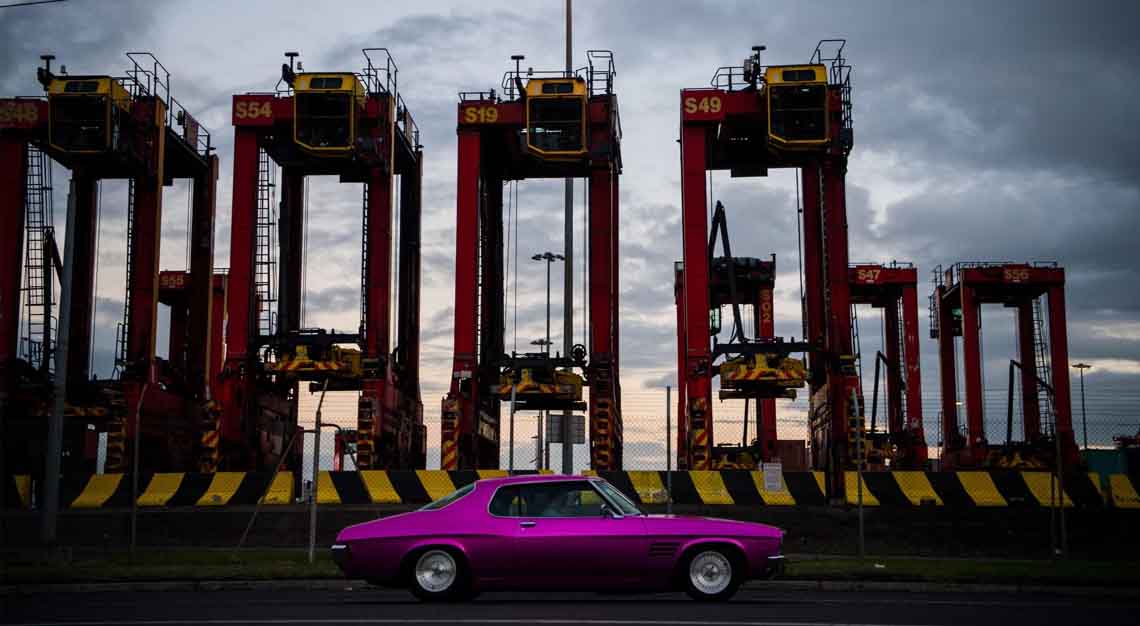
On reclaiming space and looking back to your early days as a graffiti artist, how does it feel now to see your work in almost as many public spaces as institutions built on colonial ideals?
It also comes back to growing up doing stuff out on the street—it’s free for everyone to see. A lot of the work I do, at times, goes into a gallery or an institution, and there’s a particular clientele that sees it. I grew up poor, in a working-class environment and many can relate to that. So I want my art to be seen by people from all aspects of society, not just the wealthy. But it’s also important that in a public environment, too, you have the freedom to say and do things with space and form. That’s an important aspect of having a voice.
With the projection on the Opera House, they wanted all this nice, easy stuff, and I did a really powerful symbolic statement of the warrior. That didn’t go down too well. Luckily, I had a few people fight for me, and it went ahead as this proud declaration of identity and history. I think public spaces are great for making those statements, and I love to do that. But also, because in the past, our people were denied the opportunity to contribute to wider society, it’s crucial to occupy those spaces, be vocal and be present. I’ve had people say to me, ‘don’t dream so big’, and I just think, ‘why the fuck not? Who are you to stop me?’ We have to be present in all aspects of society because we were denied so much in the past.
This story was first published on Robb Report Australia & New Zealand
